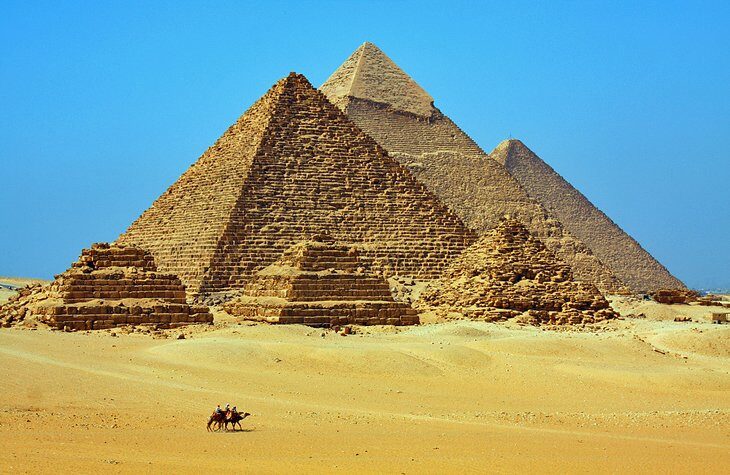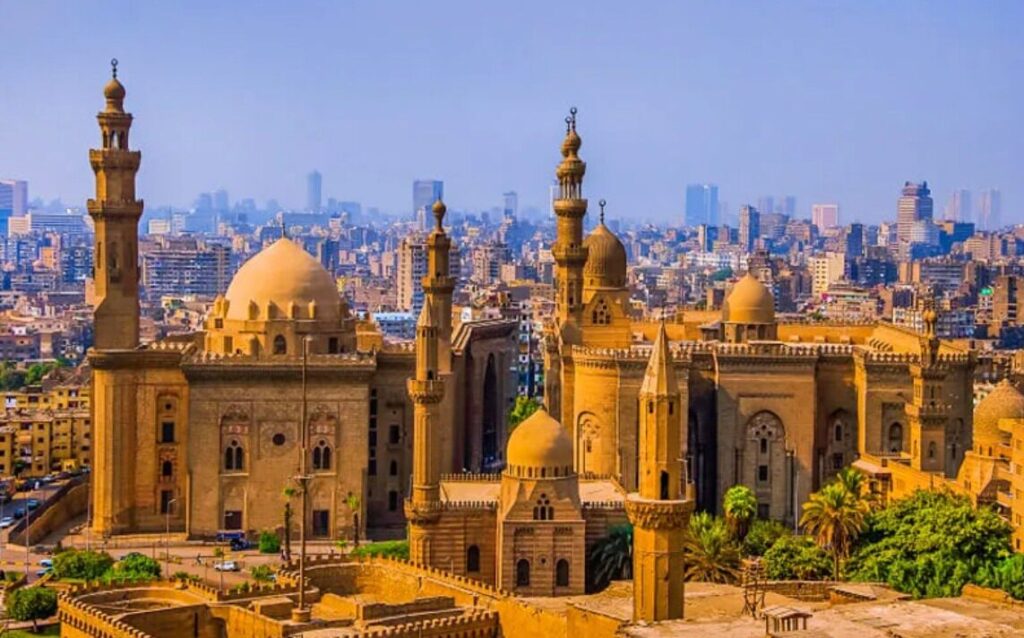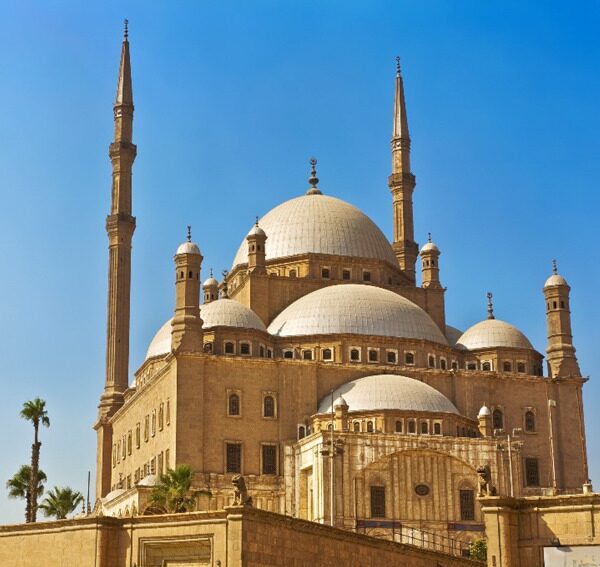Cairo is Egypt’s capital and its largest city, known for its millennia of history and as a major metropolis in Africa and the Middle East.

1. City Overview
- Population: The Greater Cairo Metropolitan area is estimated to have approximately 23.07 million people by 2025. The Cairo Governorate alone had about 9.5 million people in 2017.
- Area: The Cairo Governorate covers about 214 km², while the greater urban area is approximately 453 km². The entire metropolitan area spans about 86,000 km².
- Languages: The official language is Arabic, with the commonly used Egyptian Arabic dialect. Minority languages like English, Italian, Greek, and Syriac also have residual presence from past communities.
- Religion: Predominantly Islam, with Christianity, especially Coptic Orthodoxy, making up about 10%.
- Climate: Mediterranean climate, characterized by dry, hot summers (often exceeding 35°C) and mild winters (average 19°C/8°C).
- City Grade: Classified as a “Beta+” global city by GaWC, serving as a hub for infrastructure, culture, and economy.
2. History
- Ancient to Islamic Conquest (Before 641 AD): Ancient cities like Babylon Fortress, Memphis, and Heliopolis existed nearby during the Roman era.
- Islamic Conquest and Early Urbanization (641–969 AD): After the Arab army captured Alexandria in 641 AD, Fustat was established. Later, in 969 AD, Al-Qahira (Cairo) was founded by the Fatimid dynasty.
- Ayyubid and Mamluk Periods (12th-16th Century): The Mamluk dynasty saw a golden age of Islamic architecture and culture in the 13th-14th centuries, leading to the construction of hundreds of mosques and madrasas. Historic Cairo was designated a UNESCO World Heritage site.
- Ottoman Rule and Muhammad Ali’s Reforms (1517–1811): Ottoman rule began in 1517. In the 19th century, Muhammad Ali Pasha initiated modernization, constructing the Citadel Fortress and the Muhammad Ali Mosque.
- Colonial, Independent, and Modern Eras (1805–Present): Britain occupied Cairo in 1882, leading to the end of the monarchy with the 1952 revolution. Rapid population and industrial growth led to megacity development. Since the 2010s, the construction of a New Administrative Capital has been underway.

3. Geography
- Location: Situated on the eastern bank of the Nile River, at the southern border of the Nile Delta.
- Urban Structure:
- Historic Cairo/Islamic Cairo: The old town center and a UNESCO-protected area.
- Coptic Cairo: A hub of Coptic Christian culture.
- Downtown and New Cities: Including Zamalek, Garden City, and the New Administrative Capital on the west bank of the Nile.
4. Culture
- Islamic Cultural Heritage: Known as the “City of a Thousand Minarets” due to its hundreds of mosques, tombs, and scholars’ graves.
- Coptic Christian Tradition: Important Christian heritage sites like the Hanging Church and Abu Serga Church are preserved.
- Media and Film Hub: Cairo is the largest center for film and music industries in the Arab world.
- Market (Bazaar) Culture: Traditional markets and commercial spaces like Khan el-Khalili are vibrant.
5. Environment
- High Population Density: With a population density of approximately 50,000 people/km², Cairo ranks among the highest globally.
- Pollution and Urban Challenges: Persistent issues include air and water pollution, traffic congestion, waste management, and the presence of slums.
- Response Measures: Efforts include expanding public transportation, such as the Metro (opened in 1987), and the construction of new cities like the New Administrative Capital.
- Climate and Urban Planning: The ‘Cairo Call to Action’ emphasizes value-centered reconstruction and development, focusing on inclusive housing and enhanced public space resilience.
- Financial and Environmental Sustainability Challenges: Dependence on the Nile River economy and budget constraints highlight the need for climate finance and the development of sustainable infrastructure for flood and water management.

6. Economy
- Economic Heart of Egypt: Cairo is the focal point for finance, commerce, government, manufacturing, and media industries.
- Industrial Diversification: Industries include cotton, food, consumer goods manufacturing, and a strong service sector. Many government agencies and foreign corporate headquarters are located here.
- Metropolitan Scale: Cairo and its surrounding satellite cities form a robust economic alliance.
7. Key Locations
- Ancient and Medieval Heritage:
- Giza Pyramids & Sphinx: Near Memphis, one of the Seven Wonders of the World.
- Saqqara Step Pyramid: The world’s first stone pyramid.
- Islamic Cairo: Features medieval Islamic architecture such as the Sultan Hassan Mosque, Al-Muizz Street, and the Citadel.
- Coptic and Modern Cultural Districts:
- Coptic Cairo: A preservation area with sites like the Hanging Church and Abu Serga Church.
- Zamalek & Garden City: Upscale residential and cultural districts along the river.
- Downtown Cairo Regeneration: Historic buildings like the ‘Mogamma’ are being transformed into hotels, though gentrification concerns are also raised.
- New Cities and Modern Landmarks:
- New Administrative Capital: A planned eco-friendly city where government functions are being relocated, featuring the Green River Park.
- LRT (Light Rail Transit): Opened in 2022 to support the New Administrative Capital, with ongoing expansion.
- Other landmarks include Cairo Tower, the Greater Metro, Coptic Museum, and the National Museum of Egyptian Civilization.
8. Conclusion
Cairo possesses a captivating identity as a millennium-old historical center, a melting pot of Islamic and Coptic civilizations, and the largest metropolis in Africa and the Middle East.
- Strengths: Rich history, cultural fusion, economic and media hub, significant historical and architectural landmarks.
- Challenges: Population overcrowding, pollution, traffic congestion, and slum issues remain structural challenges due to rapid urban expansion.
- Future Strategy: Cairo’s future direction focuses on decentralized development through new cities (e.g., New Administrative Capital), expanding public transportation (Metro) and strengthening environmental regulations, preserving cultural heritage in Historic/Coptic areas, and implementing sustainable urbanization and smart infrastructure. These balanced strategies are crucial for Cairo to re-emerge as a global hub where past and present coexist.
